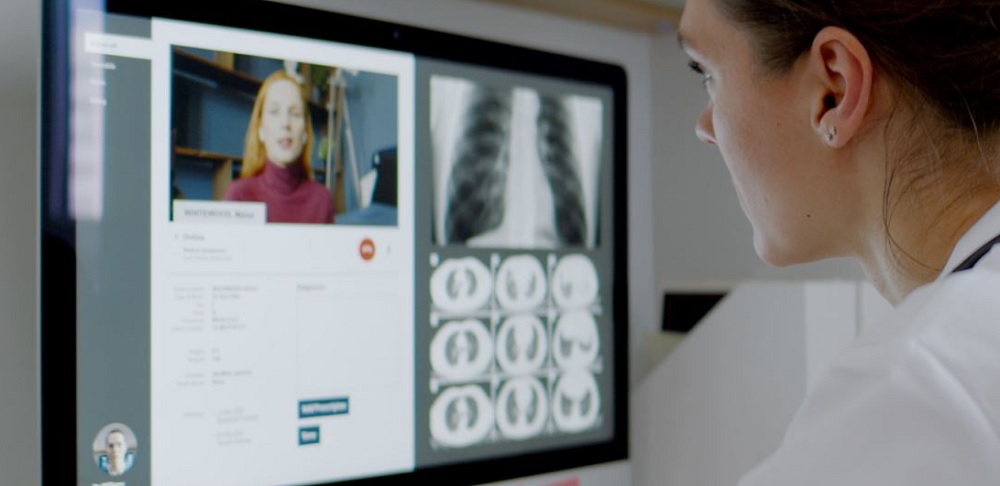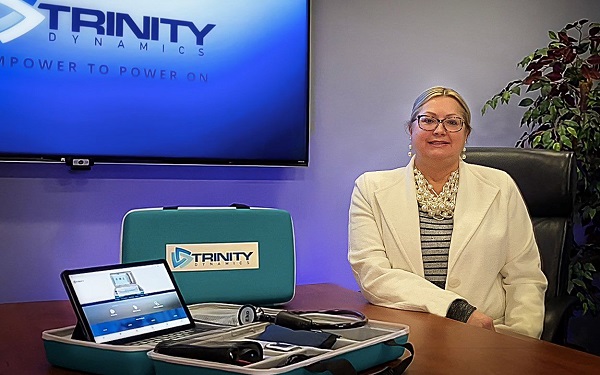There’s been a lot of talk about how companies and schools have harnessed the power of unified communication and collaboration during the coronavirus pandemic, but perhaps a bit less noticed has been the way it’s been quickly adopted and utilized more regularly in healthcare.
Telemedicine technology has been around for a while, but it was often seen as a luxury or an option that most people weren’t interested in exploring because they felt more comfortable going to the doctor’s office for their regular checkups or were worried about how secure the information they shared would be.
With most healthcare facilities focusing most of their resources and staffs on those dealing with the COVID-19 outbreak, options to go to the doctor as you have in the past have been limited—and, in many places, nonexistent. Telemedicine has become a necessity but it’s not going to disappear post-pandemic.
Trinity Dynamics developed its own telehealth package for Signature Health about seven years ago and they’ve been perfecting and tweaking the offering ever since, says CEO Barry Sawayer.
Recently, the company became the national distributor for a HIPAA-approved telemedicine product line, he says.
Telemedicine tech represents an enormous opportunity for Trinity Dynamics and many others in AV, with about 160 million telehealth visits expected this year and perhaps double that next year, says Sawayer.
The company has mostly worked with long-term care facilities but also hopes to connect with federal government agencies, he says.
“It’s going to be the new normal and we want to be a part of that,” says Sawayer.
“Telehealth is really a form of audio and video integration. We knew how to put together a package of any kind. We listened to our customers and were able to deliver what they needed.”
Yorktel, CI’s 2015 Integrator of the Year, launched Caregility in September 2019 from the healthcare segment of the company to “focus on enabling end-to-end virtual care and communication solutions to the healthcare industry,” according to the company announcement.
Caregility “has developed a platform with a suite of software and related services which is offered as a Software as a Service (SaaS) business model to better serve its healthcare customer base,” according to the Yorktel announcement.
“The new business structure has Caregility leveraging and extending Yorktel’s incumbent healthcare expertise, while enabling Yorktel to focus on growing its closely-knit set of AV, IT and collaboration solutions,” the announcement says.
Caregility “will allow us to expand our development team, enhance our support infrastructure and pursue healthcare focused sales and marketing efforts,” said Yorktel CEO Ron Gaboury in the company announcement.
“For the past several years, we’ve had the privilege of working with healthcare organizations who are pioneers in the telehealth industry,” said Caregility president and COO Mike Brandofino said in the announcement.
“As demand for seamless video communication continues to become a core requirement in all manner of patient care, these solutions will continue to resonate and bring meaningful value to healthcare organizations,” he said.
That demand arrived perhaps in an unexpected way, but it’s not going away now that people are becoming more familiar with video as a primary form of communication, says Trinity Dynamics customer relations specialist Michelle Thomas.
Providers are looking not only for access to long-term care facilities but also into homes, where potential customers range from children to adults who choose not to go to a doctor those with ambulatory issues who can’t leave their houses without a lot of extra effort.
“It’ll be where everyone will be going,” says Thomas.
The biggest issues are security on the patient’s side and reimbursement on the doctor’s side, says Sawayer, but he recently used telemedicine technology to allow his doctor to determine he needed a cortisone shot to drain some swelling in his knee.
“That personal touch is great and I don’t have to leave the house and [the doctor] doesn’t have to leave the office,” says Sawayer.
Telemedicine installations require “extended upfront training and ongoing training,” says Thomas, but can have effects on workflow, business model, revenue streams and patient experience.
“There was an objection in the beginning, because everyone is so fearful of technology in the beginning,” she says. “Because we’ve been forced into communicating this way, it will become a more comfortable setting.
Read Next: Three Verticals AV Integrators Should Focus on in the Wake of COVID-19
“Until you get in the thick of it, you don’t understand all the barriers. The workflow can be different in every situation. The software is what differentiates us and all the others and the ease of use of the equipment. The biggest thing is not to make it complicated,” she says.
The biggest obstacle is figuring out when to engage the doctor in the process, says Trinity Dynamics assistant VP Julie Kolb. Some states still don’t allow telemedicine technology as an option under normal circumstances, although those restrictions are waived for now.
“You almost needed something like [the pandemic] to understand how valuable this service can be,” she says. “I think that’s going to help push legislature through in more states.”











